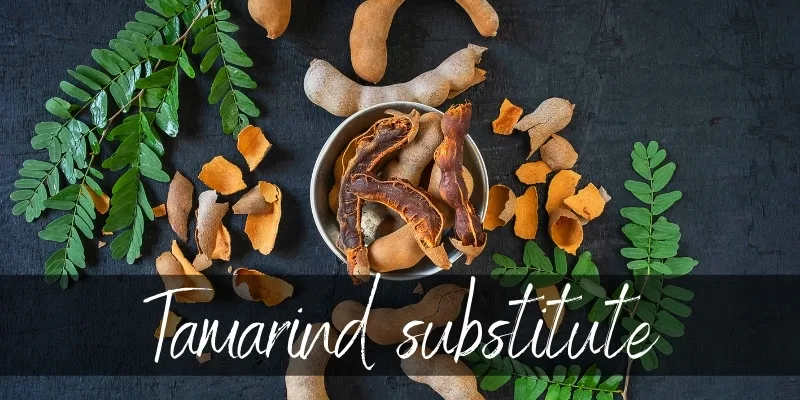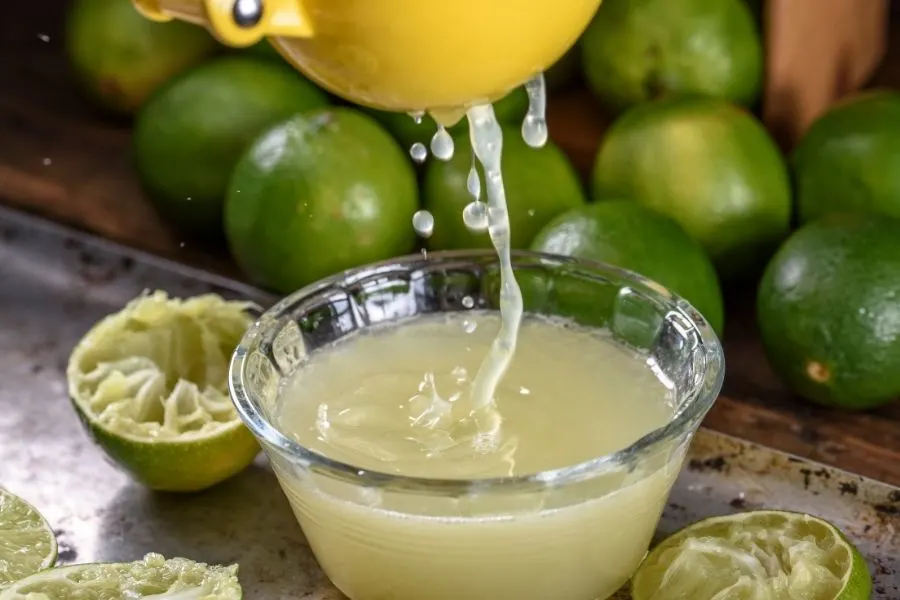Chances are, if you are looking for a tamarind substitute, it is because your recipe is asking for something called tamarind paste. Maybe you never heard of that before, or you just do not feel like going out to get some.
If you are part of the first group and googled what tamarind is, you probably have become even more confused. What works as a substitute for that odd-looking fruit and even odder-looking paste that is made from it? Are there even any good substitutes out there ?

Best tamarind substitutes
The best tamarind substitutes are lemon juice with sugar, or mango powder, pomegranate molasses, or Worcestershire sauce. It depends on what you need the tamarind for, as it can be used both for sweet or savory dishes.
When substituting with lemon and sugar, you can also use lime and sugar or vinegar and sugar. The point is to create a sweet and sour flavor. Tamarind is high tartaric acid, especially early on, so it is definitely a more sour fruit. It is sometimes referred to as nature’s sour candy.
However, the true taste of tamarind ranges a lot, from sweet and tangy to sour and tart, and what it ends up tasting like depends a lot on which stage you eat it in.
If you choose to eat less ripe tamarind, you can expect that it will be on the sourer end of the spectrum. However, if you choose to eat it when it is fully ripe, you can expect it to be much sweeter and more tangy than actually sour.
Read also: Tamarind Varieties
Tamarind is a fruit grown in tropical areas and originally came from South Asia and East Africa. The small pod-like food is technically a legume, but most people consider it a fruit. There is a hard, brown shell on the outside of the fruit, but you will find a pulp or even softer paste on the inside when you crack it open.
Tamarind can be eaten at all stages, so what it looks like/feels like on the inside depends a lot on which stage you open it. The less ripe it is, the crispier it will be. On the other hand, fully ripe tamarind tends to be soft and almost paste-like. However, when it gets overripe, it does shrivel up and become hard once again.
Now let’s take a look at the best tamarind substitutes out there.
Lemon or lime juice and sugar
Lemon or lime juice mixed in with sugar is the best substitute there is. This is good because out of all the options on this list, they are probably the most common items for you to actually have in your fridge or cabinets.

With this substitute, you will combine equal parts lemon or lime juice with sugar and then put the same amount of the mixture into the recipe as it calls for tamarind. If you do not have lemon or lime juice, you can also do this with vinegar.
If you do not have sugar, you can also combine dried fruit with lemon juice, lime juice, or vinegar. Place the dried fruit you decide to use (raisins, prunes, etc.) in a blender with your choice of liquid.
As above, lime or lemon juice is better, but you can use vinegar if you do not have either of those. Blend up the dried fruit and liquid until it has created a puree or paste. Use this mixture in the same way you would use the tamarind.
Mango powder
Mango powder is the second-best option for a tamarind substitute. It is also called amchur and amchoor and is very similar in flavor to tamarind. Mango powder is dried, unripe mango that is ground up into a powder. If you are looking for a good place to buy mango powder, check out an Indian grocery store as it is most commonly used in Indian dishes. It is not used very often elsewhere.
If you do choose to use mango powder, you need to use fifty percent more mango powder than what it calls for in tamarind. This is because mango powder is not as tart as tamarind so to get a similar flavor, you need considerably more. You will also need to make a paste with it (equal parts mango powder and water) as the mango powder by itself does not add any moisture to the dish, and tamarind would.
Pomegranate molasses
Suppose you do not have any of the above substitutes. In that case, you can also use pomegranate molasses, which is fairly common in Middle Eastern dishes. This does have a fairly different flavor, but you can use it as the tartness is complementary to what is in tamarind.
It does not have a large amount of sugar in it, even if you do not opt to get the sugar free kind. If you are using pomegranate molasses, use the same amount of molasses as you would tamarind.
Worcestershire sauce
If all else fails, you can choose to use Worcestershire sauce, though this is not a great substitute as it has a lot of other flavors to it. What makes it an okay substitute is that many Worcestershire sauce brands use tamarind in their recipes, so you will get some of the actual tamarind in your dish.

Before you just use any Worcestershire sauce, make sure you read the ingredients to make sure there is, in fact, tamarind in it. If you do have Worcestershire sauce with tamarind in it and use it as your substitute, use the same amount of it as you would tamarind.
Read Also: How To Store Tamarind
What is tamarind used in?
So what dishes can you expect to find tamarind in? For the most part, you can expect to find tamarind in Southeastern Asian dishes, but it is getting more and more common. There are a variety of different dishes and desserts that you may find tamarind in.
However, because it is most commonly used in Asian dishes, you may have a hard time finding it if you do not live near an Asian market or grocery store.

